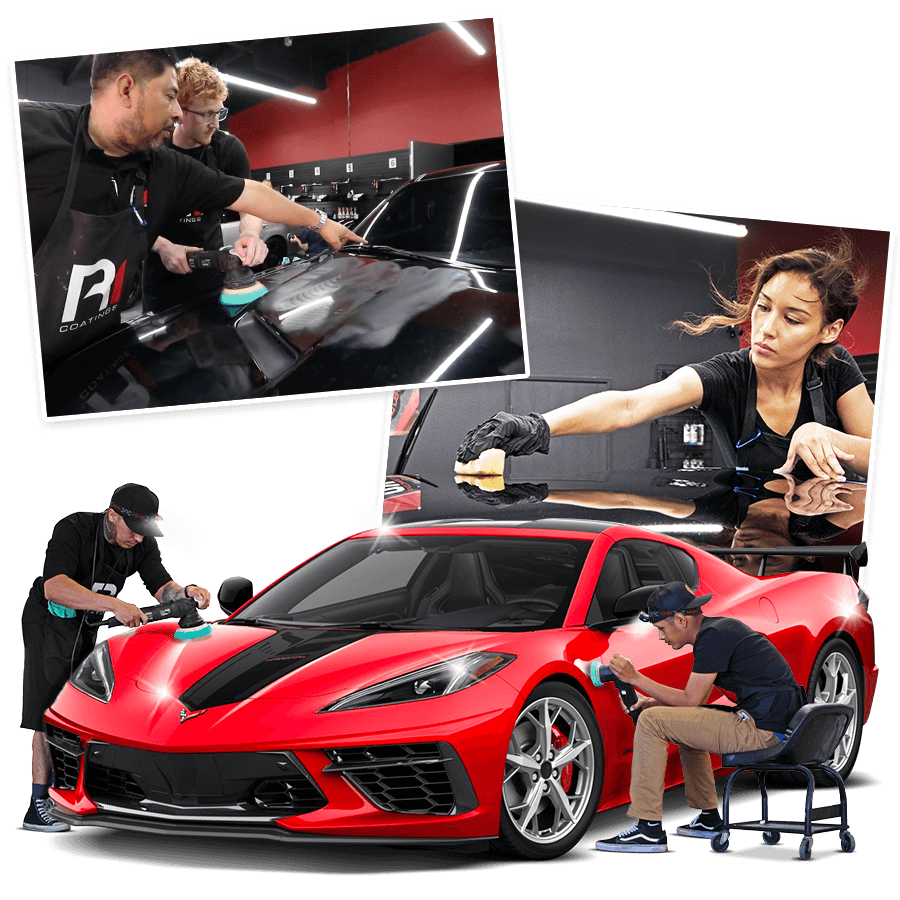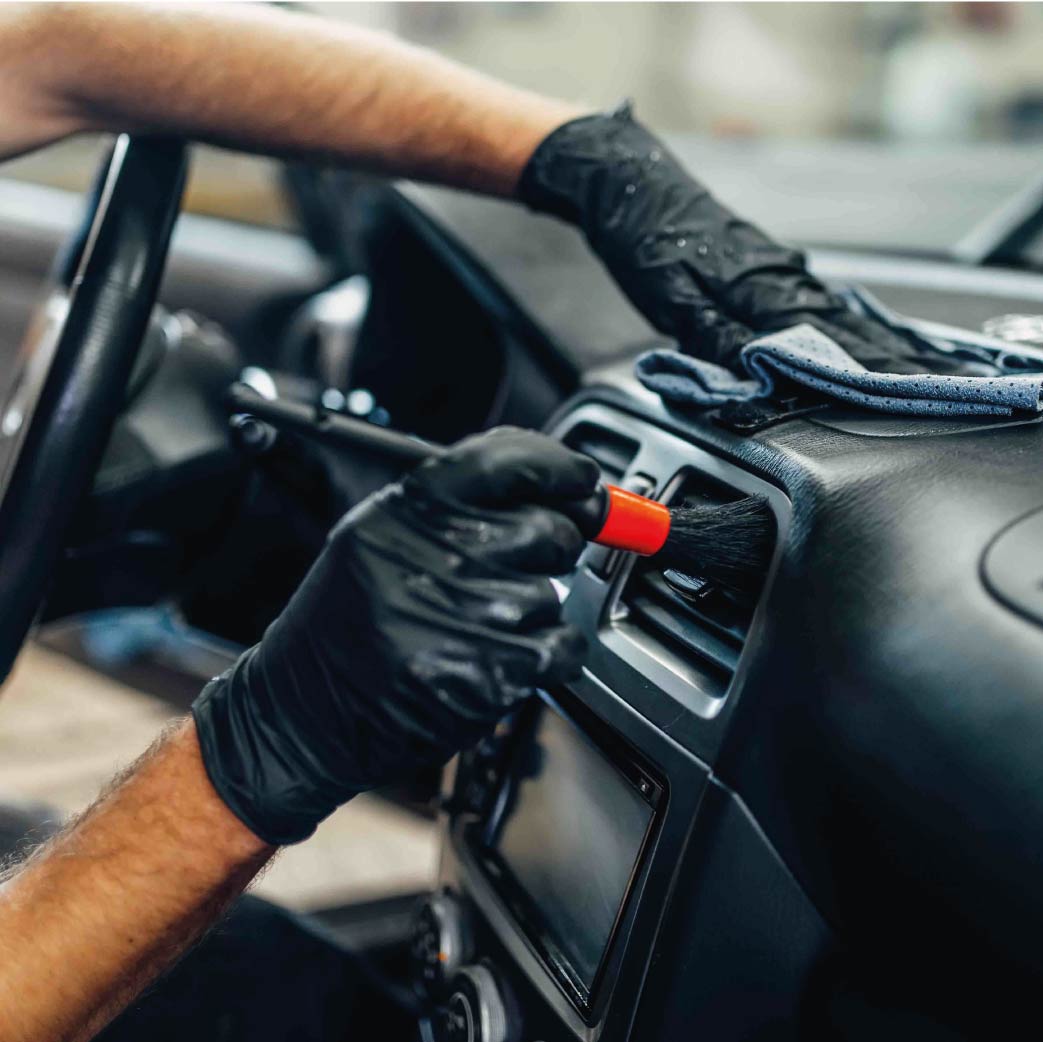Why Ceramic Covering Is the Ultimate Service for Lasting Luster
In the realm of auto care, ceramic covering has actually emerged as a superior choice to standard waxing approaches, using exceptional longevity and security for a car's coating. As we check out the intricate advantages and mechanisms behind ceramic coatings, it ends up being important to recognize how they redefine car upkeep and longevity.

What Is Ceramic Layer?
Specifying ceramic layer entails recognizing its duty as a safety layer for different surfaces, particularly in the automotive industry. Ceramic covering is a liquid polymer used to the external surface areas of automobiles, producing a chemical bond with the factory paint. This procedure causes a long lasting layer that improves the car's appearance while providing an awesome obstacle against environmental impurities.

Along with auto applications, ceramic coverings are also utilized in numerous markets, including aerospace, marine, and commercial sectors. Their adaptability enables security on surface areas such as glass, metal, and plastics. As an innovation, ceramic covering remains to develop, with innovations boosting its toughness, hydrophobic properties, and resistance to scrapes and UV damages. This innovation strengthens ceramic layer's credibility as a leading option for surface protection.
Benefits of Ceramic Coating
Ceramic finishing supplies a multitude of advantages that significantly enhance the durability and look of lorry surfaces. Unlike conventional waxes or sealers, ceramic layers offer a robust safety layer that can hold up against harsh environmental conditions, consisting of UV rays, acid rainfall, and roadway crud.
An additional key benefit is the hydrophobic building of ceramic coatings. This feature causes water to bead up and roll off the surface, properly minimizing water places and minimizing the buildup of dirt and pollutants. Therefore, automobiles treated with ceramic finishes are less complicated to cleanse, conserving both effort and time for proprietors.
Furthermore, ceramic finishings improve the general appearance of the vehicle by imparting a deep, shiny coating. This visual enhancement not only elevates the vehicle's appearance yet can additionally boost its resale worth, making it a wise investment for vehicle enthusiasts. Overall, the myriad benefits of ceramic layer make it a perfect choice for anyone seeking to protect and keep their automobile's exterior in beautiful condition.
Just How Ceramic Layer Functions
The protective high qualities of ceramic finish come from its sophisticated chemical structure, primarily containing silicon dioxide (SiO2) When related to a car's surface, the covering chemically bonds with the paint, producing a hydrophobic layer that fends off water, dirt, and various other pollutants. This bond is accomplished with a procedure called cross-linking, where SiO2 particles interconnect, forming a long lasting and resistant barrier that sticks strongly to the substratum.
Once healed, the ceramic finishing enhances the surface's solidity, offering resistance versus scratches and swirl marks. This safety layer also functions as a shield against hazardous UV rays, which can create oxidation and fading in time. In addition, the covering's smooth coating decreases rubbing, making it easier to cleanse the surface while making certain that gunk and debris do not adhere as easily.
Moreover, the longevity of ceramic finishes is a significant benefit, with many formulas supplying protection that can last for numerous years under appropriate upkeep. This mix of chemical bonding, hydrophobic properties, and UV resistance makes ceramic covering an efficient option for keeping the aesthetic appeal and integrity of automobile surface areas.
Contrasting Ceramic Coating to Conventional Wax
Commonly overlooked, the comparison between ceramic finishing and standard wax discloses substantial distinctions in upkeep, longevity, and defense. Typical wax, while supplying a temporary sparkle, typically lasts just a couple of weeks to a few months prior to requiring reapplication. Its defense is restricted, mainly protecting against UV rays and light contaminants, but it can easily be removed or degraded by environmental elements.
On the other hand, ceramic covering supplies a lasting and robust barrier that chemically bonds with the car's paint. This sophisticated technology offers exceptional protection against harsh ecological aspects, consisting of acid rain, bird droppings, and road salts. Ceramic coatings can last a number of years, substantially minimizing the regularity of upkeep and reapplication compared to wax.
In addition, ceramic layers display hydrophobic buildings, permitting pop over to this web-site water and pollutants to bead and slide off the surface area a lot more efficiently. This attribute not only boosts the automobile's appearance but additionally makes cleaning much easier. In recap, while conventional wax might be a cost-efficient service for temporary shine, ceramic finish stands apart as the remarkable choice for those seeking durable security and convenience of maintenance.
Maintenance Tips for Porcelain Coated Vehicles
Preserving the honesty and appearance of a ceramic covered lorry requires details care methods to make certain the covering executes optimally over its life expectancy. Most importantly, regular washing is necessary. Make use of a pH-neutral automobile hair shampoo and a microfiber clean mitt to prevent scratching the surface. Prevent automatic auto washes with extreme brushes that can harm the finishing.
After washing, always dry the car with a soft microfiber towel to avoid water areas. It is likewise a good idea to apply a ceramic-safe drying aid to enhance shine and add a layer of security.
For optimal maintenance, think about carrying out a maintenance wash every two to three weeks and an extensive detail every 6 months. In addition, stay clear of making use of unpleasant cleaning items or devices that might jeopardize the ceramic layer.
If minor imperfections arise, light index brightening with an ideal item can assist restore the covering's integrity. Lastly, using a ceramic coating booster every couple of months can rejuvenate the surface and prolong the effectiveness of the first application. By adhering to these upkeep suggestions, owners can delight in the lasting advantages of their ceramic coated lorries.

Conclusion
Finally, ceramic covering emerges as the exceptional choice for achieving and maintaining a lasting shine on vehicles. Detail'd Luxury Detailing & Coatings Ceramic Coating. Its unique chemical bonding with paint, combined with hydrophobic residential or commercial properties, offers remarkable security against ecological impurities and UV damages. This ingenious service not only boosts the visual charm of cars but also decreases upkeep initiatives, making it a beneficial investment for car owners. The benefits of ceramic finishing clearly establish its prominence over standard wax options in automotive treatment.
In the realm of automotive treatment, ceramic finishing has actually emerged as a superior choice to conventional waxing approaches, using unequaled longevity and defense for a car's coating. As we check out the intricate advantages and systems behind ceramic coverings, it becomes necessary to comprehend exactly how they redefine vehicle upkeep and durability. Ceramic covering is a liquid polymer used to the exterior surface areas of lorries, creating a chemical bond with the manufacturing facility paint.Ceramic coating view website provides a plethora of benefits that substantially boost the longevity and appearance of lorry surface areas.Additionally, ceramic finishes enhance the overall look of the automobile by conveying a deep, glossy finish.